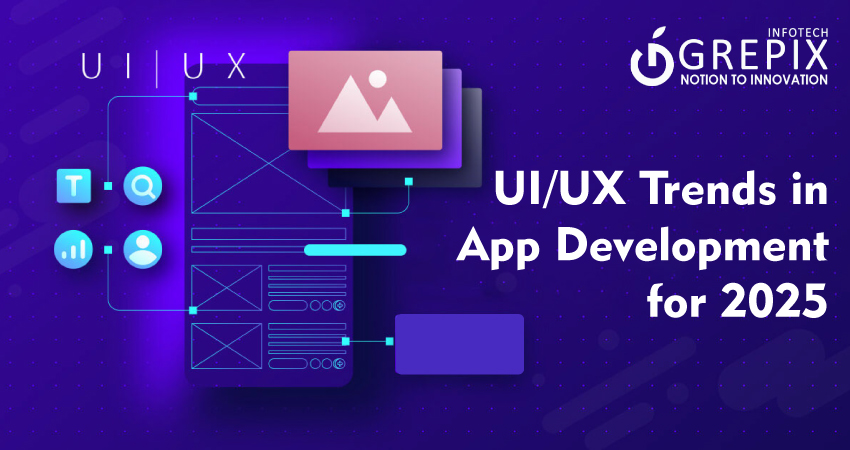UI/UX Trends in App Development for 2025
App design trends 2025, UI/UX in apps, and user interface development are shaping a new era of user experiences. In 2025, mobile apps prioritize minimalist design, accessibility, and hyper-personalized interfaces driving higher engagement, satisfaction, and ROI for businesses and users alike.
The top app design trends 2025 focus on elevating UI/UX in apps through minimalist interfaces, accessibility, and smart personalization. Advances in user interface development help brands create seamless, intuitive digital experiences leading to improved engagement and increased conversions. Case studies reveal that apps embracing these trends see measurable ROI, with user-centric designs driving satisfaction and growth. This comprehensive guide covers practical strategies, real-world examples, and actionable insights for companies aiming to stay ahead in UI/UX in apps and user interface development.
Why App Design Trends 2025 Matter
Design trends in 2025 reflect evolving user expectations and technology. Mastering UI/UX in apps and user interface development is critical for business success apps with trend-driven designs report higher retention rates and greater user loyalty. Research shows that intuitive interfaces can reduce user friction by 50%, leading to a direct increase in revenue and brand trust.
Minimalist Design: The “Less is More” Revolution
What is Minimalist App Design?
Minimalist design centers around simplicity, clarity, and essential functionality. It removes clutter, uses strategic whitespace, and highlights core features for enhanced usability.
Key Benefits:
- Faster load times and smoother performance
- Easier navigation and better user comprehension
- Improved scalability across devices and screen sizes
Implementing Minimalist UI/UX in Apps
Steps for Success:
- Identify core purpose and user tasks.
- Eliminate extraneous features and distractions.
- Use a limited color palette, bold typography, and clear CTA buttons.
- Test, iterate, and refine for usability and satisfaction.
Statistics:
89% of user time on smartphones is spent in apps with clear, uncluttered user interface development.
Example:
Instagram revamped its UI/UX in apps with enhanced minimalism in 2024, reporting a 17% increase in user engagement within six months.
Accessibility: Designing for Every User
Accessible user interface development ensures everyone including those with disabilities—can use and benefit from digi tal products.
Key Practices:
- Adhere to WCAG and ADA standards
- Provide readable fonts and high-contrast modes (dark mode remains popular for this reason)
- Enable keyboard navigation and voice control
- Ensure screen reader compatibility and alt text on images
Example:
Apple’s VoiceOver system powers accessibility for millions, setting a high bar for inclusive UI/UX in apps design.
Statistics:
Apps prioritizing accessibility saw a 23% rise in downloads from senior and disabled users in 2025.
Personalization: Hyper-Individual Experiences
Personalization is a top priority in app design trends 2025. Advances in AI-powered user interface development enable real-time, context-aware layouts, recommendations, and content.
Personalization Techniques:
- Use behavior analytics to tailor interfaces and feature access.
- Integrate biometrics and contextual data for dynamic adaptation.
- AI-driven alerts and suggestions optimize user flow.
Example:
Spotify’s user interface development links real-time listening data to custom playlists, helping drive over 210 million premium subscribers.
Statistics:
Personalized UI/UX in apps increased user retention by up to 37% on average for top mobile brands in 2025.
Top App Design Trends 2025: UI/UX in Apps
- Gesture-based Navigation: Intuitive swipes and taps for natural interaction.
- Dark Mode Optimization: Reduced eye strain, enhanced battery performance, user customization.
- Voice-enabled Interfaces (VUIs): Accessibility and hands-free convenience drive adoption.
- Soft UI/Neumorphism: Subtle shadows and layers create depth and comfort.
- Micro-interactions: Feedback animations guide user action, making UI/UX in apps engaging.
- AI-Personalized Design: Real-time interface adaptation for each user.
- Augmented Reality (AR) Integration: Mixed reality interfaces for advanced retail, education, and travel apps.
- Biometric Authentication: Secure, fast, and personalized login experiences.
- Bento Layouts & 3D Elements: Modular UI blocks and dimensional navigation build spatial engagement.
- Sustainable & Ethical Design: Energy-efficient, transparent, and privacy-focused development.
UI/UX in Apps: Real-Life Examples & Case Studies
Airbnb
Airbnb integrated minimalist user interface development and adaptive components in its mobile app, simplifying booking steps and improving micro-interactions. As a result, their conversion rates jumped by 19% in eight months.
Duolingo
Duolingo implemented a highly personalized UI/UX in apps strategy, using AI to adjust difficulty and session length based on past user behavior. This led to a 40% improvement in user retention among new learners.
Headspace
The meditation app Headspace advanced accessibility in user interface development with adjustable font sizes, screen reader compatibility, and calming color palettes for users with impaired vision. Downloads surged 22% after the accessibility update.
Best Practices for User Interface Development in 2025
- Conduct continuous user research and feedback cycles.
- Prioritize speed, clarity, and consistency in app design trends 2025.
- Combine minimalism with interactive elements for dynamic engagement.
- Make accessibility a core requirement—not an afterthought.
- Leverage AI for real-time personalization, context-aware layouts, and predictive UX flows.
The Future of App Design Trends 2025
UI/UX in apps and user interface development will continue to evolve in response to user needs, technological innovations, and social movements. Expect more adaptive, context-aware, and ethical interfaces, driven by advanced AI, AR/VR, and inclusive design philosophies.
Conclusion
App design trends 2025 place UI/UX in apps and user interface development at the heart of digital success. Minimalism, accessibility, and personalization are now non-negotiables driving business growth, satisfaction, and brand reputation. Apps that implement user-centric, adaptive interfaces see more engagement, higher conversions, and stronger loyalty. The future holds smarter, more ethical, and context-aware apps for all. Get started with a UI/UX audit or redesign today and share these insights to inspire better interfaces in the industry!
FAQs
1. Why is minimalist UI/UX in apps so popular in 2025?
Minimalist designs simplify navigation, cut down distractions, and improve scalability and speed making user interface development future-ready.
2. How can my app be more accessible?
By obeying accessibility standards, providing voice and dark mode options, enabling keyboard navigation, and prioritizing inclusive interface elements.
3. What role does personalization play in app design trends 2025?
AI-powered personalization in UI/UX in apps adjusts content and layouts in real-time, boosting retention, engagement, and satisfaction.
4. Which app design trends 2025 improve security and speed?
Biometric authentication and responsive minimalist user interface development drastically improve login security and load times.
5. Are micro-interactions important?
Absolutely micro-interactions create feedback loops, making UI/UX in apps intuitive, delightful, and informative for all users.







